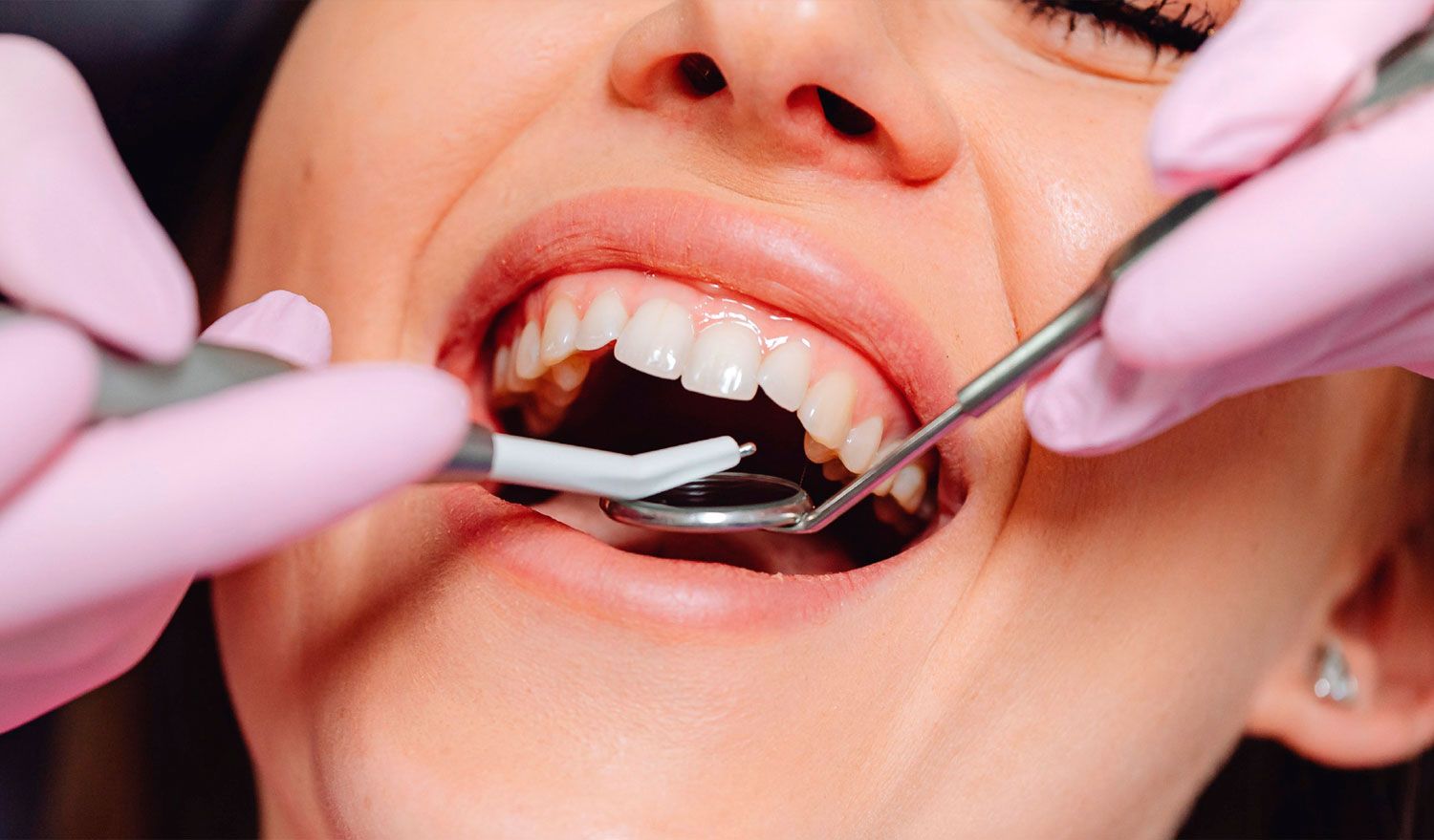Implantology (Implant)
An implant is a tooth root replacement placed in the jawbone during a minor surgical procedure, often performed under local anesthesia. Most implants resemble a screw and are made of titanium, zirconium, or a combination of these materials. The implant provides a strong foundation for an implant crown, bridge, or denture.
When do you need an implant?
If you are missing a tooth, or if multiple teeth are missing in your mouth, implantology may be a suitable treatment. If only one tooth is missing, a single implant is usually placed. After a period of bone healing, a crown, an implant crown, is placed on top.
If several adjacent teeth are missing, implantology can be used to anchor a removable click-on frame. Multiple implants can also be placed, followed by an implant bridge. This bridge is fixed in your mouth like an implant crown and functions like normal teeth.
If you have dentures and there is little support in your jaw, causing them to loosen while chewing, two, four, or six implants can be placed. A complete denture is then made that clicks onto the implants. Like a click-on frame, these dentures are removable, allowing for thorough daily cleaning.
Treatment
Prior to implant placement, a thorough dental examination by the implantologist is required. Your medical and dental health influence the success of implant treatment. This preliminary examination includes assessment of bone quality and quantity through visual inspection and additional X-rays. This is done after the tooth or tooth has been extracted, but preferably the tooth in question is still present.
In exceptional cases, an implant can be placed immediately after the tooth root has been extracted. Often, a tooth or molar is extracted first and the bone is allowed to heal for 8-12 weeks before the implant is placed. If a tooth or molar has been missing for a long time, there may not be enough jawbone to anchor/place an implant. New bone can usually be implanted with additional treatment. This can be artificial bone or your own bone, for example, from your pelvic bone or elsewhere in your jaw. After 4-12 months, depending on the situation and healing time, the implant can be placed.
During the treatment, the implant is placed in the jawbone under local anesthesia. Over the following 2 to 6 months, the jawbone bonds with the implant. After this, the crown, bridge, or denture can be made.
An implant is placed in one or two phases. In the first-stage procedure, the covering screw (healing abutment) is visible above the gum. In the second stage, the implant is placed and the gum is repositioned over the implant. Once the implant has grown in, a small incision is made in the gum and the healing abutment is then placed.
Costs
Implant placement and the construction of the implants are (partially) covered by your supplementary dental insurance, if you have one.
The costs depend on the extent of the treatment. Ask your implantologist about the treatment options and an estimate. View a sample estimate for a simple implant treatment here.
In exceptional circumstances, implantology is covered by basic health insurance. If you wish to claim this, your practitioner will submit an application to your health insurer. They will assess your eligibility for reimbursement under your basic insurance. Care for young people up to 18 years old
If you lose a front tooth before the age of 18 due to an accident, or if one or more missing permanent incisors or canines have not yet developed, implants are covered by basic health insurance. If you lose a front tooth due to an accident before the age of 18, the implantologist will submit a request; treatment can be postponed until the age of 22.
Adult care
If you have a severely shrunken, edentulous jaw, dentures may be partially covered by basic health insurance.
The following statutory deductible applies to clip-on dentures:
For clip-on dentures in the lower jaw, the deductible is 10% for the mesostructure (bar, snaps, or magnets) and the clip-on denture itself.
For clip-on dentures in the upper jaw, the deductible is 8% for the mesostructure (bar, snaps, or magnets) and the clip-on denture itself.
For a clip-on denture in one jaw and a denture in the other jaw (code J50) fabricated simultaneously, the deductible is 17%.
If your deductible has not yet been used in that year, it will be used first.
Risks
The chance that an implant will fuse properly is very high. A thorough dental examination by your practitioner prior to treatment minimizes the risk of complications or failures. However, you may experience temporary discomfort immediately after implant placement, such as pain or swelling. Occasionally, an implant will not fuse to the jawbone. In that case, it must be removed. The risk of this increases if you smoke.
Alternatives
Bridge
Partial dentures
Dentures
Source: KNMT and NVOI
Opening hours
-
Mon – Fri.:
08:00 - 12:00 uur
13:00 - 17:00 uur


